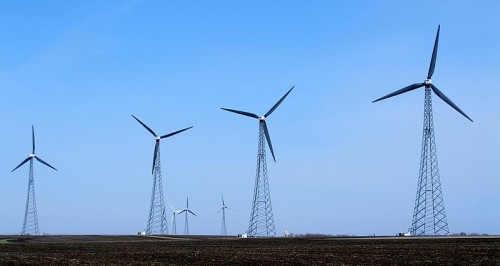 On any given day in the coverage leading up to the 2012 election, you can read stories about how the candidates face those evangelicals in Iowa.
On any given day in the coverage leading up to the 2012 election, you can read stories about how the candidates face those evangelicals in Iowa.
Exit polls from 2008 show that 60 percent of voters in the G.O.P. Iowa caucuses and in the South Carolina primary were evangelicals. And since a large number of evangelicals say they don't plan to vote for a Mormon, that raises questions for Mitt Romney's ability to excite primary voters.
These articles often reference Iowan evangelicals in passing, not really explaining how exactly evangelicals fit in the primaries. Enter Jennifer Jacobs, who has written a very helpful piece for the Des Moines Register based on a new poll about likely Iowa Republican caucusgoers.
Here's what you might not know about this group:
- About half have a college degree or higher. That's more than Iowa adults or Americans in general.
- The proportion who consider themselves born-again Christians hits in the high-40 percent range, slightly above the range for the nation.
- Mirroring the national picture, they're more likely to be male, evidence of the classic gender gap between Republican and Democratic voters.
"A lot of people who are not from Iowa think caucusgoers look like somebody out of a Grant Wood picture. Somebody in bib overalls with a pitchfork, and it's not true. There are 3 million Iowans, and less than 80,000 of them are farmers," [David Yepsen, director of the Paul Simon Public Policy Institute at Southern Illinois University] said.
So maybe I shouldn't have chosen the windmill picture? It was just so pretty. The reporter does a nice job of taking the poll and breaking it down into what we know about Iowans and what that might say about the election.
An oft-quoted figure to support the religious-right domination thesis is a 2008 entrance poll that found 60 percent of Iowa GOP caucusgoers thought of themselves as "born-again or evangelical Christian."
The problem is that estimates of the number of born-again or evangelical Christians in the United States vary because pollsters ask the question in a variety of ways and Americans define the term differently, said Alan Cooperman, associate director of the Pew Research Center's Forum on Religion & Public Life.
Not everyone who is an evangelical is a social conservative; some evangelicals consider themselves moderates or liberals.
What? You're telling me that every stereotype might not be true? That doesn't fit the narrative.
And here's another factoid that defies the mindset that religious fervor disproportionately influences Iowa's Republican caucuses: Iowa as a whole is in the middle of the pack in terms of religiosity, according to Pew's findings.
According to the Pew Forum's 2007 religious landscape survey, 51 percent of all adults in Iowa said religion is very important in their lives; the national average was 56 percent. New Hampshire and Vermont were at the bottom with 36 percent, and Sarah Palin's Alaska was second from the bottom with 37 percent. Mississippi was at the top at 82 percent.
It's likely Democratic caucusgoers in Iowa are most out of step with the national trend on identification as born-again Christians. Their percentage rests in the low 20 percent range.
The articles says that Romney led a poll with 23 percent support and Bachmann fell right behind at 22 percent.
Bachmann is stronger than Romney among people who line up with some of the sweet spots of likely Republican caucusgoer demographics: She's stronger with those ages 45 to 64 and with those who have a college degree. She does much better among those who describe themselves as very conservative. She leads, but it's close among born-again respondents.
What's interesting is that even though she leads among "born-again" respondents, the article says it's close. I wonder, how close? This seems to go against the narrative that Romney will have a tough time in Iowa among evangelicals, but maybe it's still too soon to tell.
Let's admit that reporters can't go into depth in every single article and explain every nuance, but this is an example of how reporters could take a step back and ask whether the data supports what they've always assumed. For instance, what if the newspapers in South Carolina, New Hampshire and other early primary states did articles like this? Keep us updated on particularly good or bad politics and religion coverage you're reading.
Image: Via Wikimedia Commons. The photographer says its a portion of the world's largest windfarm.
